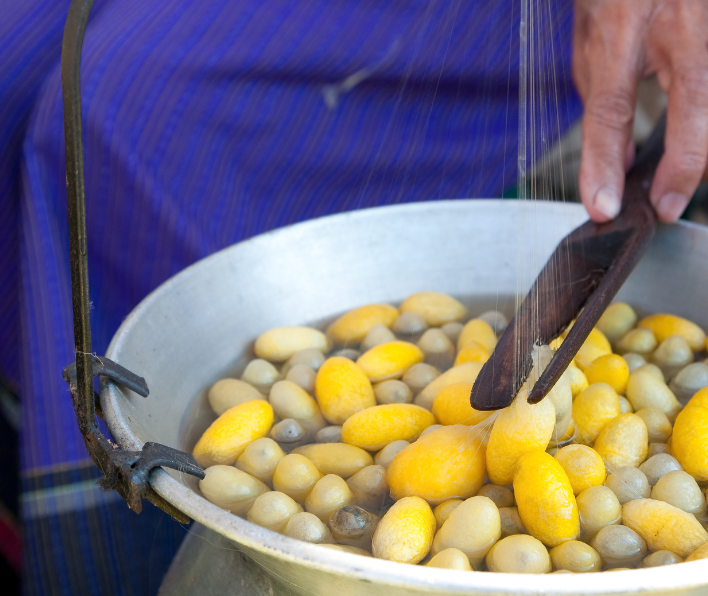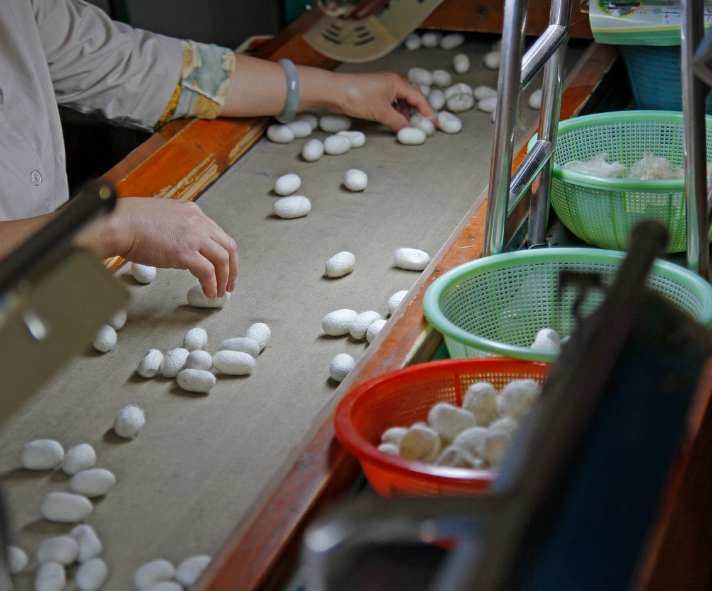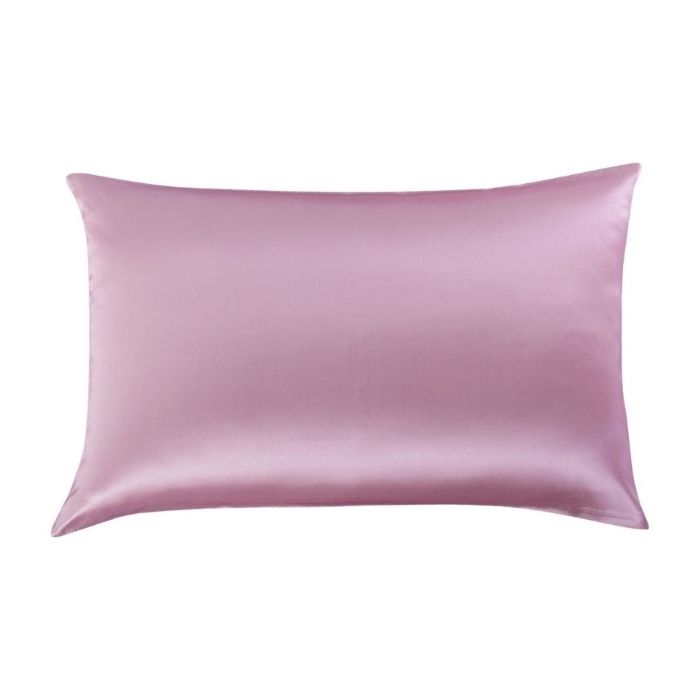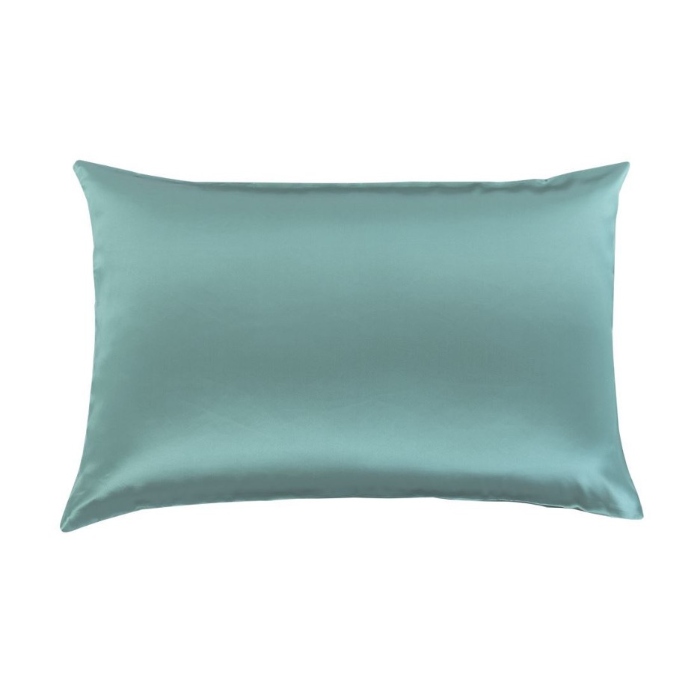The Ultimate Guide to Silk Pillowcases: Benefits, Quality, and Care
Author: Manchester Collection Date Posted:28 October 2022
Everybody knows how important a good night’s sleep is. There’s nothing better than waking up in the morning feeling refreshed and ready to take on a new day. But have you ever wondered what affects the quality of your sleep?
While most people say that the most important factors are your bed and the pillow you use, they often disregard the importance of a good pillowcase. And even though you can technically opt for any sort of pillowcase, not all of them will provide you with the same benefits.
And there isn’t a material out there that provides more benefits for skin and hair than silk. Let’s see why.
Benefits for skin
Most of us have experienced the issues a bad pillowcase can cause to our skin, and if you’re after a pillowcase that will benefit your skin, look no further than silk.
With silk pillowcases, you will get:
● Fewer wrinkles. The creases you get when you sleep are caused by your pillowcase, and not only does it take forever for them to disappear, but they can also cause permanent wrinkles. But since silk is a smooth fabric and doesn’t stiffen, you won’t get those annoying creases or wrinkles that follow.
● Acne prevention. One of the many qualities of silk is that it’s moisture wicking (more on this later), and what that means is that it won’t pick up dirt as easily as cotton, for example. So with a good skincare routine and a silk pillowcase, your acne will clear out in no time.
● Less irritation and inflammation. Since silk is such a smooth fabric, you don’t have to worry about all of that annoying irritation and inflammation that comes from sleeping on a rougher fabric.
● Hydrated skin. If you have a nighttime skincare routine and sleep on a cotton pillowcase, you should know that those expensive creams and oils are transferring from your face to your pillow. But since silk repels moisture, it won’t suck up all of those products and your face will stay beautiful and hydrated.
● Help after a sunburn. If you’re suffering from sunburn, the last thing you want is to sleep on a rough and scratchy fabric. A soft and smooth silk pillowcase will provide you with the softness your skin needs and the natural cooling properties will help you heal much faster.
Benefits for hair
A bad hair day always starts the same way. You wake up, take one look in the mirror, and see a head full of frizzy hair with tangles. The issue here isn’t always tossing and turning in your sleep. Often, the problem is caused by your pillowcase.
The smooth texture of silk helps your hair in more than just one way. Not only will it get rid of that annoying frizz and unmanageable tangles, but it will also cause your hair to have less breakage and give you beautiful and glossy hair. Friction causes more split ends and breakage than people realize.
And if you have curly or wavy hair, your silk pillowcase will be your new best friend since it will keep your natural curls and the texture of your hair unharmed and keep frizz away.
How are silk pillowcases made?

Silk pillowcases are crafted through a meticulous process that begins with the life cycle of the silkworm.
Silkworms are cultivated on mulberry trees. They feed on mulberry leaves until they are ready to spin their cocoons. This phase is known as sericulture, and it involves careful raising of silkworms in controlled environments to ensure high-quality silk.
When the silkworms are ready, they spin their cocoons using a single continuous silk thread. Each cocoon is made up of approximately 1,000 to 3,000 feet of silk filament.
The cocoons are then harvested by humans and boiled in hot water. This process softens the sericin (the protein that holds the cocoon together), making it easier to unravel the silk filament. The boiling process also ensures that the silkworms do not transform into moths, which would damage the silk.
Then, the silk threads are carefully unwound from the cocoon in a process called reeling. Several filaments are combined to create a single thread of raw silk.
Raw silk contains sericin, which is removed through a process called degumming. The silk threads are soaked in hot soapy water to remove this protein, resulting in the soft and lustrous texture that silk is known for.
The degummed silk threads are then spun into yarn. This yarn is woven into fabric using specialized looms. The weaving process can vary, with common techniques including satin weave, which gives silk its characteristic sheen and smooth surface.
Before selling, the woven silk fabric is dyed in various colors, and in the bet case scenario - using eco-friendly dyes. After dyeing, the fabric undergoes finishing processes to enhance its texture and durability. This may include washing, stretching, and ironing to achieve the desired quality.
The finished silk fabric is then cut into pieces and sewn into pillowcases (bedding). Skilled artisans or advanced sewing machines ensure that the seams are neat and the pillowcases meet quality standards.
Finally, each silk pillowcase or bed sheet set undergoes rigorous quality control checks to ensure it meets the required standards of softness, durability, and appearance before being packaged and shipped to consumers.

What you need to know about the silk threadcount?
Silk threads are exceptionally fine, allowing more threads to fit into a square inch of fabric compared to other materials, resulting in naturally high thread counts for silk sheets. However, a high thread count in silk does not always indicate high quality. Instead, the quality of silk is better assessed by its momme weight, which provides a more accurate measure of the fabric's density and durability. Therefore, momme weight is a more reliable indicator of silk quality than thread count.
What is momme weight?
Momme weight is a measure of silk fabric density, where a 22-momme silk means a piece of silk measuring 45 inches by 100 yards weighs 22 pounds. Unlike thread count, which is used for cotton, momme weight provides a more accurate indicator of silk quality.
- 30 Momme: Heavy, ideal for curtains and duvets.
- 20-30 Momme: Perfect for luxury bedding and garments.
- Below 20 Momme: Lightweight, suitable for scarves and light fabrics.
For silk sheets and pillowcases, a momme weight of 22-25 is recommended, offering a balance of durability and luxurious feel. Additionally, Grade 6A and OEKO-TEX Standard 100 certifications ensure high-quality, chemical-free silk. Chinese silk is often regarded as the finest due to its long history of production. Always check the momme weight and grade when purchasing silk bedding to ensure authenticity and quality.
How silk regulates moisture while you sleep
While you may think showering and washing your face right before bed will ensure you’re sleeping in a clean and fresh environment, that isn’t the case. People sweat during the night and our faces secrete various oils, so even if you sleep on a fresh pillowcase every night, it will never be 100% clean.
That is, unless you’re sleeping on a silk pillowcase. As we already mentioned, silk is a moisture-wicking fabric and it doesn’t absorb moisture the same way most other fabrics do. That doesn’t mean silk doesn’t get dirty, but it does take more time to get dirty than other fabrics.
But if you want to get all the silk pillowcases benefits, including a cleaner sleep, you need to know how to wash your silk pillowcase properly and do it regularly. This clean sleeping environment also means you’re sleeping on a hypoallergenic pillowcase that isn’t a host for bacteria and dust mites.
Silk - ideal bedding for all seasons
We often talk about how different fabrics are best for different seasons, and while there are some fabrics that are better during the winter than summer and vice versa, that isn’t the case for silk. It doesn’t matter what temperature it is, silk will always be a good choice.
One of the properties of silk is that it has the ability to control and reduce hot flushes, so we can say that silk bedding is one of the summer essentials. So if you run hot while you sleep or it feels like it’s a hundred degrees outside, your silk pillowcase will stay cool and comfortable throughout the entire night. Additionally, silk is non-flammable, which means it won’t heat up while you sleep.
But what about when winter comes around? During the colder months, bedding made of silk can retain warmth, so you won’t wake up during the night due to those annoying chills.
Eco-Friendly Benefits of Silk
Silk is a natural, biodegradable fabric that stands out for its eco-friendly properties. Unlike synthetic materials, silk is produced through sustainable farming practices that have a lower environmental impact. The silk production process usually involves minimal use of chemicals and relies on the natural lifecycle of silkworms, making it a more sustainable choice. For environmentally conscious consumers, choosing silk pillowcases not only provides luxurious comfort but also supports eco-friendly and sustainable practices, contributing to a healthier planet.
Saving money in the long run
Something that deters a lot of people from purchasing silk pillowcases is the price and thinking that they aren’t worth the money. However, even though they come with a slightly higher price tag than most other pillowcases, buying high-quality silk bedding is actually a good investment.
Silk pillowcases need to be replaced much less often and don’t need to be washed as frequently as most other fabrics. Additionally, silk is a much stronger material than cotton and as long as you take care of your silk pillowcases properly, you will have them for years to come.
Do silk pillowcases really make a difference?
Silk pillowcases offer numerous benefits for skin, hair, and sleep quality. They reduce wrinkles, prevent acne, and maintain skin hydration. Silk is hypoallergenic, regulates moisture, and provides a clean sleeping environment.
The manufacturing process of silk involves careful sericulture, reeling, and weaving. Momme weight, not thread count, is crucial for assessing silk quality. Silk's natural properties make it suitable for all seasons and eco-friendly. Despite higher costs, silk pillowcases are a long-term investment due to their durability and minimal maintenance needs.



